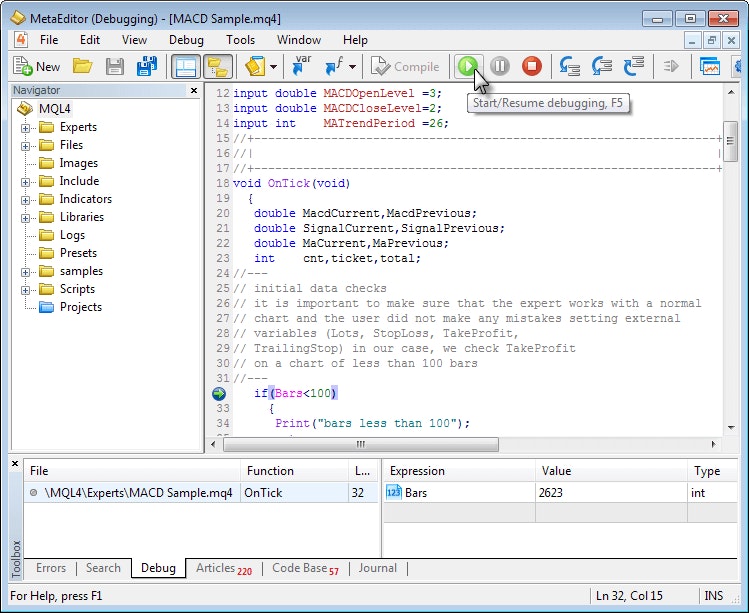Nick Goold
A crucial yet often overlooked aspect of forex trading is strategy optimization. This in-depth article will explore forex trading strategy optimization and its critical role in a trader's journey to consistent profitability.
Understanding Forex Trading Strategy Optimization
Forex trading strategy optimization is the process of adjusting a trading system to make it more effective and efficient. It involves fine-tuning various components of a trading strategy, such as entry and exit points, stop loss and take profit levels, indicators, and risk-reward ratio.
The primary aim of strategy optimization is to maximize profitability while minimizing risk. Regularly assessing and tweaking your trading strategy can keep it attuned to evolving market conditions, reduce drawdowns, and enhance returns.
The Importance of Forex Trading Strategy Optimization
The adage goes, "If you fail to plan, you plan to fail." This wisdom holds especially true in forex trading. Every trader needs a strategy, a roadmap to navigate the volatile forex market. However, even the most reliable strategy will only yield consistently profitable results if adequately optimized.
Optimization helps improve your strategy's robustness and adaptability, enabling it to perform well under varying market conditions. An optimized strategy can also help reduce emotional trading, as it provides clear rules for trade entries, exits, and risk management, reducing the scope for impulsive, ill-judged decisions.

Steps to Optimize Your Forex Trading Strategy
Forex trading strategy optimization is a multifaceted process. Here are some essential steps to guide you:
Backtesting
Backtesting involves applying your trading strategy to historical price data to evaluate performance. It helps identify the strengths and weaknesses of your strategy, providing a basis for optimization.
Fine-Tuning Indicators
Most trading strategies use technical indicators to generate trade signals. However, indicators aren't infallible. They may produce false signals or lag behind the price action. Fine-tuning the parameters of your indicators can help reduce false signals and improve the timeliness of your trade entries and exits.
Adjusting Stop Loss and Take Profit Levels
Stop losses and take profits are crucial risk management tools. However, setting them too tight can get you stopped out prematurely, while setting them too wide will lead to a losing system. Adjusting these levels to match your chosen currency pair's volatility and price range can help protect your capital and lock in profits. The risk-reward ratio reflects the potential risk you're willing to take for a potential reward. Optimizing your risk-reward ratio can help balance your desire for profit with your risk tolerance.
Optimizing tools
Optimizing your forex trading strategy is an essential part of achieving consistent profitability. Traders can utilize several tools and resources to streamline and enhance this process. Here's a look at some of the most widely used:
Trading Platforms
Many popular trading platforms like MetaTrader 4/5 and cTrader have built-in strategy optimization tools. These include backtesting capabilities, technical indicators, and scripting languages (like MQL for MetaTrader) that allow you to code, test, and tweak your trading strategies.
Backtesting Software: Backtesting is an essential part of trading strategy optimization. Software like Forex Tester, TradingView, or the backtesting module in MetaTrader can allow you to test how your strategy would have performed over historical data.

Risk Management Tools
Proper risk management is a crucial part of any trading strategy. Tools like risk calculators or position size calculators can help you optimize the risk-reward ratio of your strategy.
Trading Journals
A trading journal can be an invaluable tool for optimization. By tracking your trades, you can analyze what's working and what's not in your strategy and make necessary adjustments.
Forex Simulators
These tools allow you to trade in real-time on the forex market with fake money. It's an excellent way to test and optimize your strategies in a real-world setting without risking real money.
Each tool offers unique benefits and can be crucial in your forex strategy optimization process. However, it's important to remember that no tool can guarantee success. Strategy optimization continuously requires ongoing learning, practice, and adjustment.
Caveats in Forex Trading Strategy Optimization
While optimization is crucial for enhancing the performance of a forex trading strategy, it's essential to approach it judiciously:
Beware of Curve Fitting
Curve fitting refers to tweaking a trading strategy excessively to fit past price data perfectly. While it can yield impressive backtest results, a curve-fitted strategy is unlikely to perform well in live trading, as it's too tailored to past data and may not adapt well to future market conditions.
Keep it Simple
Overcomplicating a trading strategy with too many indicators or rules can make it challenging to execute and may lead to analysis paralysis. Keeping your system simple and focusing on a few reliable signals is often more effective.
Embracing a Continuous Optimization Mindset
Forex trading strategy optimization is not a one-off task but a continuous process. The forex market is dynamic, with market conditions changing frequently. An optimization approach that worked in a trending market might not work in a ranging market. Therefore, traders need to adopt a continuous optimization mindset, regularly reviewing and tweaking their strategy to keep it in sync with the market's pulse.
Conclusion
Forex trading strategy optimization is critical in a trader's journey to consistent profitability. It involves a delicate balance of tweaking your strategy to improve performance while avoiding over-optimization. By adopting a systematic and continuous optimization process, traders can keep their trading strategy robust, adaptable, and attuned to the ever-changing forex market, enhancing their trading performance and profitability.

